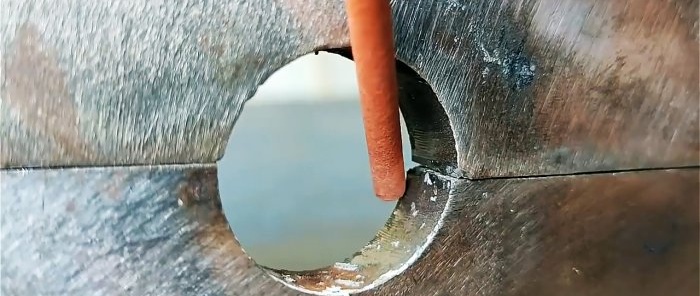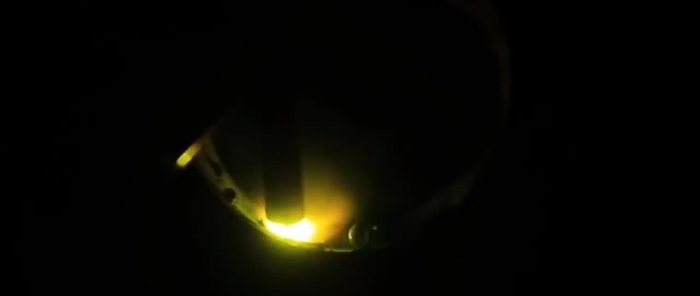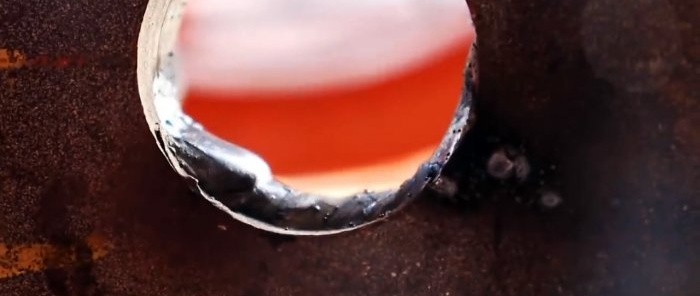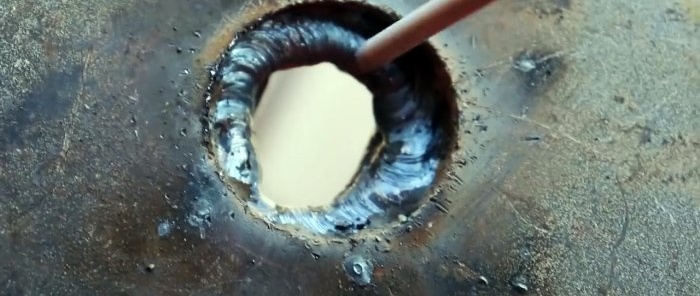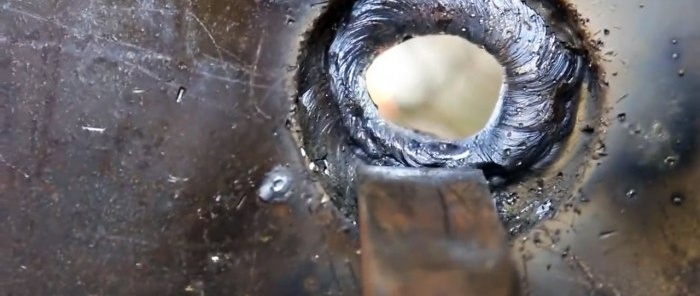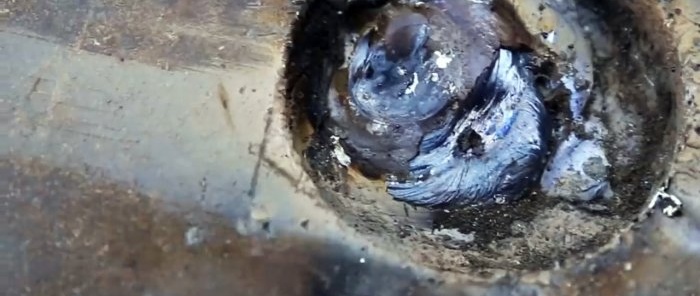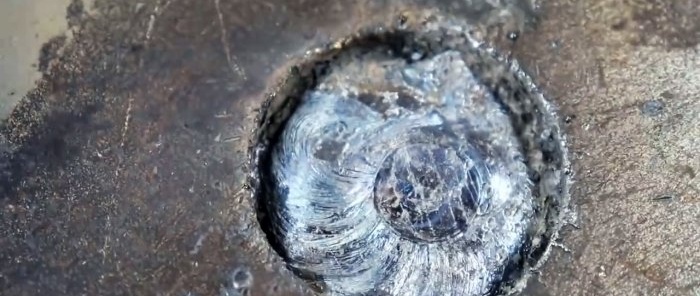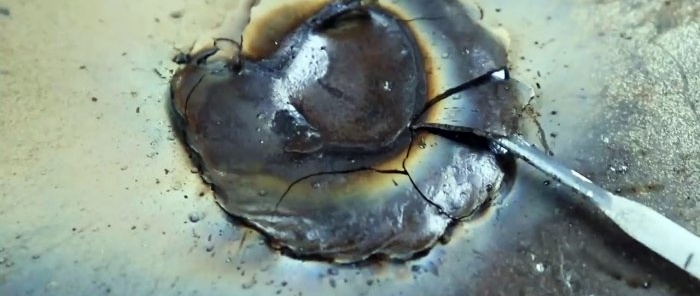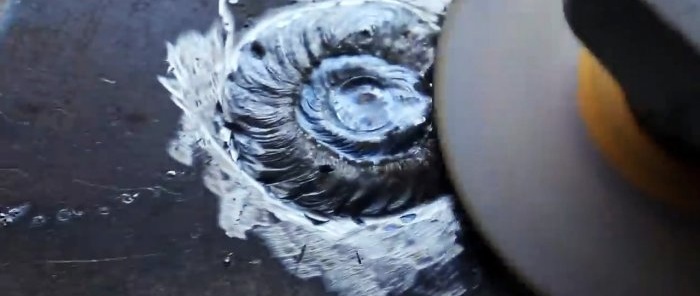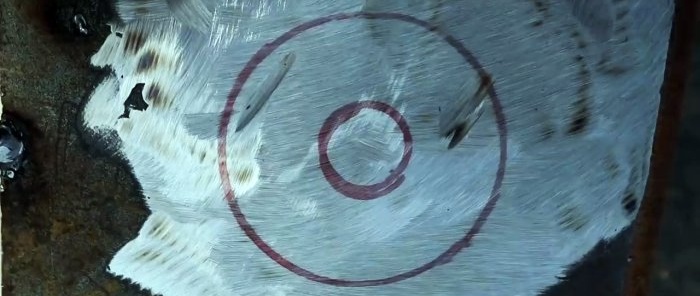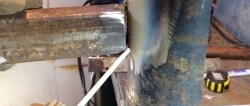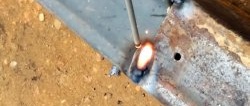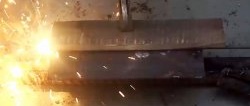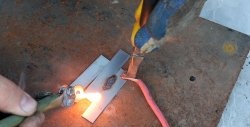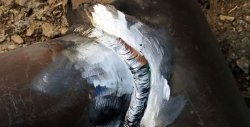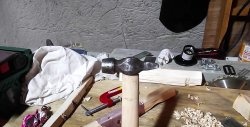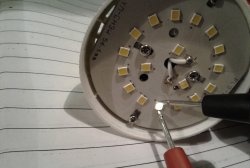How to weld a large hole in a part using only an electrode without inserts
A situation often arises when a hole in a part needs to be repaired or moved due to an error in planning or a discrepancy between the actual dimensions and the design ones. This problem can be solved by welding. The method consists of layer-by-layer surfacing of metal onto the edges of the hole - as in 3D printing. This method is suitable with limited tools - you only need a welding machine with electrodes, an angle grinder and a hammer.
We weld a large hole in a thick-walled part
To make work easier, we position the cleaned part so that its wall is vertical and the hole, accordingly, horizontal. This way the metal will flow down less. We start surfacing from the edge farthest from us.
To simplify the process, you can beat off the resulting slag.
After the first pass around the circle, the metal will be deposited directly onto the seam. The problem is that the slag will interfere with welding the last section.
If it is not possible to drive it out of the weld pool directly during welding, you can, as was shown earlier, beat off the slag and close the hole with the last seam.
After closing the through hole, the part should be turned over for convenience and secured so that the hole is located vertically.
We fuse the metal in a spiral until the hole is completely filled with metal.
The process is completed - all that remains is to beat off the slag and finish the welding site using an angle grinder.
Welding a hole with an electrode is suitable if you have limited tools, but it also has disadvantages - it is demanding on the welder’s skills and increased consumption of electrodes. These problems can be solved with additional tools and materials - by making a plug that is welded to the part instead of surfacing the same volume of material.
When performing welding work, do not forget about protective equipment: Welding can only be done in a welding mask and gloves; the rest of the body must be covered with thick clothing. Lack of protection can lead to injury - the welding arc is a powerful source of hard ultraviolet radiation that can irreversibly damage vision. In addition, ultraviolet radiation of this spectrum is extremely harmful to the skin, and splashes of hot metal can complement such an unsuccessful “tanning” with thermal burns. Welding should be done in a well-ventilated area or outdoors.
